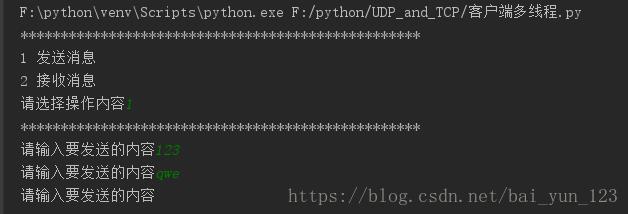Python中对元组和列表按条件进行排序的方法示例
在python中对一个元组排序
我的同事Axel Hecht 给我展示了一些我所不知道的关于python排序的东西。 在python里你可以对一个元组进行排序。例子是最好的说明:
>>> items = [(1, 'B'), (1, 'A'), (2, 'A'), (0, 'B'), (0, 'a')] >>> sorted(items) [(0, 'B'), (0, 'a'), (1, 'A'), (1, 'B'), (2, 'A')]
默认情况下内置的sort和sorted函数接收的参数是元组时,他将会先按元组的第一个元素进行排序再按第二个元素进行排序。 然而,注意到结果中(0, 'B')在(0, 'a')的前面。这是因为大写字母B的ASCII编码比a小。然而,假设你想要一些更人性的排序并且不关注大小写。你或许会这么做:
>>> sorted(items, key=str.lower) Traceback (most recent call last): File "<stdin>", line 1, in <module> TypeError: descriptor 'lower' requires a 'str' object but received a 'tuple'
我们将会得到一个错误,因为他不能正确处理元组的第一部分。(注:原文作者估计想说元组中第一项是数字,不能使用lower这个方法;正确的原因提示的很明显了,是因为你传递的是一个元组,而元组是没有lower这个方法的)
我们可以试着写一个lambda函数(eg.sorted(items, key=lambda x: x.lower() if isinstance(x, str) else x)),他将不会工作因为你只处理了元组的一个元素。(注:同上面,作者这么做必然是错的,思考给这个lambda传一个元组,返回的是什么?)
言归正传,下面就是你应该怎么做的方法。一个lambda,它会返回一个元组:
>>> sorted(items, key=lambda x: (x[0], x[1].lower())) [(0, 'a'), (0, 'B'), (1, 'A'), (1, 'B'), (2, 'A')]
现在你完成了它!谢谢Axel的分享!
我确信你知道你可以倒序排列,仅仅使用sorted(items, reverse=True, …),但是你怎么根据关键字来进行不同的排序?
使用lambda函数返回元组的技巧,下面是一个我们排序一个稍微高级的数据结构:
>>> peeps = [{'name': 'Bill', 'salary': 1000}, {'name': 'Bill', 'salary': 500}, {'name': 'Ted', 'salary': 500}]
现在,使用lambda函数返回一个元组的特性来排序:
>>> sorted(peeps, key=lambda x: (x['name'], x['salary']))
[{'salary': 500, 'name': 'Bill'}, {'salary': 1000, 'name': 'Bill'}, {'salary': 500, 'name': 'Ted'}]
很有意思,对吧?Bill 在Ted的前面,并且500在1000的前面。但是如何在相同的 name 下,对 salary 反向排序?很简单,对它取反:
>>> sorted(peeps, key=lambda x: (x['name'], -x['salary']))
[{'salary': 1000, 'name': 'Bill'}, {'salary': 500, 'name': 'Bill'}, {'salary': 500, 'name': 'Ted'}]
问题:将列表[[1, 2, 3], [4, 5, 6], [7, 8, 9]]排序为[[1, 4, 7], [2, 5, 8], [3, 6, 9]]
分析:
1.转变过程如下:
1 2 3 1 4 7
4 5 6 —> 2 5 8
7 8 9 3 6 9
可以将变换过程看成是原二维数组行(row)变成新数组的列(column),即抽出原数组第一行(row)作为第一列(column),第二行(row)作为第二列(column)…当然也可以将变换过程看成是原数组的列变为新数组的行,限于时间,就暂不考虑这种实现方式。
2.最原始的做法,写两个for循环,外层循环依次迭代数组的行(row),内层循环迭代数组的列(column),来实现这个反转过程,将原数组第一行(row)作为第一列(column),第二行(row)作为第二列(column),过程如下:
In [7]: l = [[1, 2, 3], [4, 5, 6], [7, 8, 9]] In [8]: len_row = 3 In [9]: len_col = 3 In [10]: temp = [[],[],[]] In [11]: for row in l: ....: for i in range(len_col): ....: temp[i].append(row[i]) ....: print temp ....: [[1], [2], [3]] [[1, 4], [2, 5], [3, 6]] [[1, 4, 7], [2, 5, 8], [3, 6, 9]] In [12]:
当然,还可以使用列表推导来做,原理和上面一样,外层迭代row,内层迭代col,生成新的列表:
In [100]: l Out[100]: [[1, 2, 3], [4, 5, 6], [7, 8, 9]] In [101]: [[row[col] for row in l] for col in range(len(l[0])) ] Out[101]: [[1, 4, 7], [2, 5, 8], [3, 6, 9]]
最后,对这个题目,用zip也可以达到同样的目的:
In [104]: l Out[104]: [[1, 2, 3], [4, 5, 6], [7, 8, 9]] In [105]: zip(*l) Out[105]: [(1, 4, 7), (2, 5, 8), (3, 6, 9)] In [106]: map(list,zip(*l)) Out[106]: [[1, 4, 7], [2, 5, 8], [3, 6, 9]]
*这个符号和列表配合有解压的意思,如l=[[1, 2, 3], [4, 5, 6], [7, 8, 9]],则我理解*l就变成了[1, 2, 3], [4, 5, 6], [7, 8, 9]这样三个值,所以zip(*l)和zip([1, 2, 3], [4, 5, 6], [7, 8, 9])的结果才会是一样的,如下:
In [17]: l=[[1, 2, 3], [4, 5, 6], [7, 8, 9]] In [18]: zip([1, 2, 3], [4, 5, 6], [7, 8, 9]) Out[18]: [(1, 4, 7), (2, 5, 8), (3, 6, 9)] In [19]: zip(*l) Out[19]: [(1, 4, 7), (2, 5, 8), (3, 6, 9)] In [20]:

